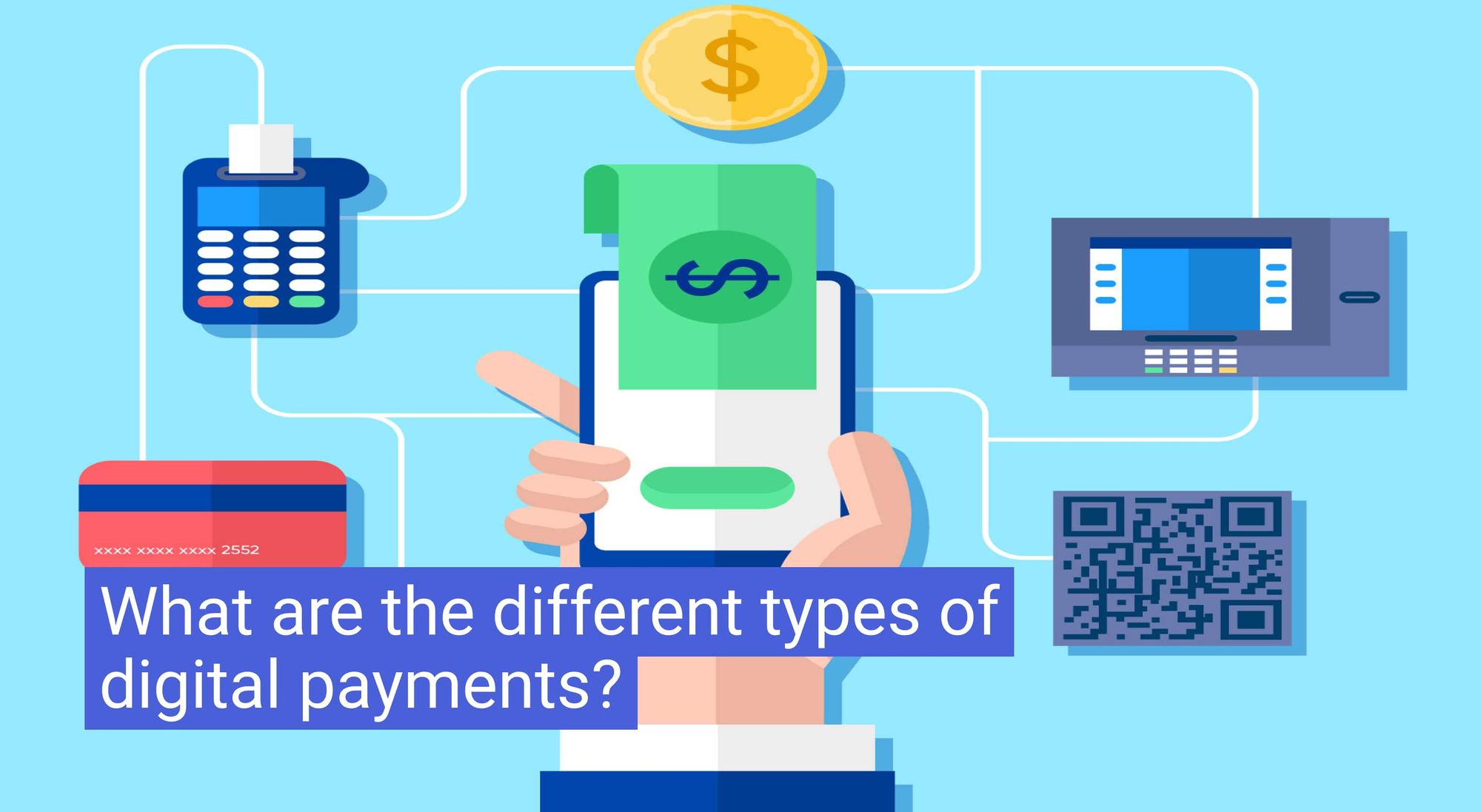What are the different types of digital payments?

Digital payments have transformed how we pay for goods and services and even how we send and receive money from friends or family. They offer a number of key advantages over traditional payment methods, including connivence, speed and security that have contributed to them being preferred payment method for most people globally.
In this article, we'll explore the most common types of digital payments and their pros and cons.
- Credit and Debit Cards - Credit and debit cards are perhaps the most well-known and widely used digital payment method. They offer convenience and flexibility, as they can be used for both online and offline transactions. However, they can also be subject to high transaction fees and interest rates, and may not be accepted by all merchants.
- E-wallets - E-wallets are digital wallets that store payment information, such as credit card or bank account details. They offer a convenient way to make online purchases without having to enter payment information each time. However, they may be subject to security risks and may not be accepted by all merchants.
- Bank Transfers - Bank transfers are a common digital payment method that involves transferring funds from one bank account to another. They offer a secure and reliable way to make payments, but can be subject to high transaction fees and long processing times.
- Cryptocurrencies - Cryptocurrencies are digital currencies that use advanced encryption techniques to secure transactions and control the creation of new units. They offer a decentralized, secure, and transparent way to make digital payments, but can be subject to volatility and regulatory uncertainty.
- Mobile Payments - Mobile payments involve using a mobile device to make payments, typically through a mobile payment app. They offer convenience and speed, but may be subject to security risks and may not be accepted by all merchants.
- QR Codes - This payment alternative is fast, safe and secure. The user simply needs to open up their bank's app and scan the merchant's QR code to select the digital payment method of choice and confirm the purchase. But paying via a QR code is not always the most convenient option. The user needs to have a smart phone and be connected to the internet in order to transact.
In conclusion, the different types of digital payments each have their own advantages and disadvantages, and choosing the right one for your needs will depend on factors such as convenience, security, and acceptance by merchants.

